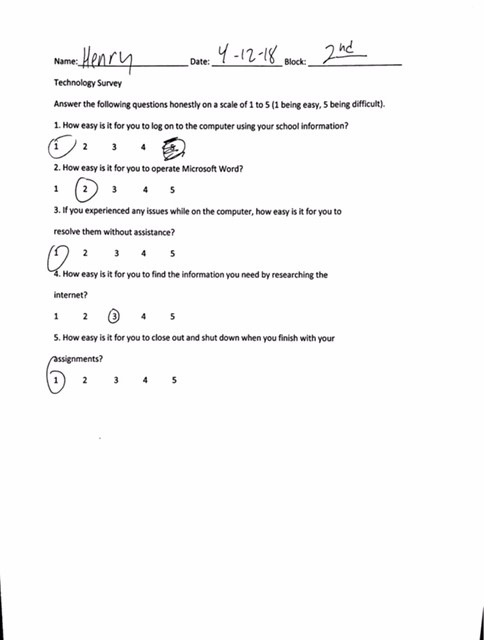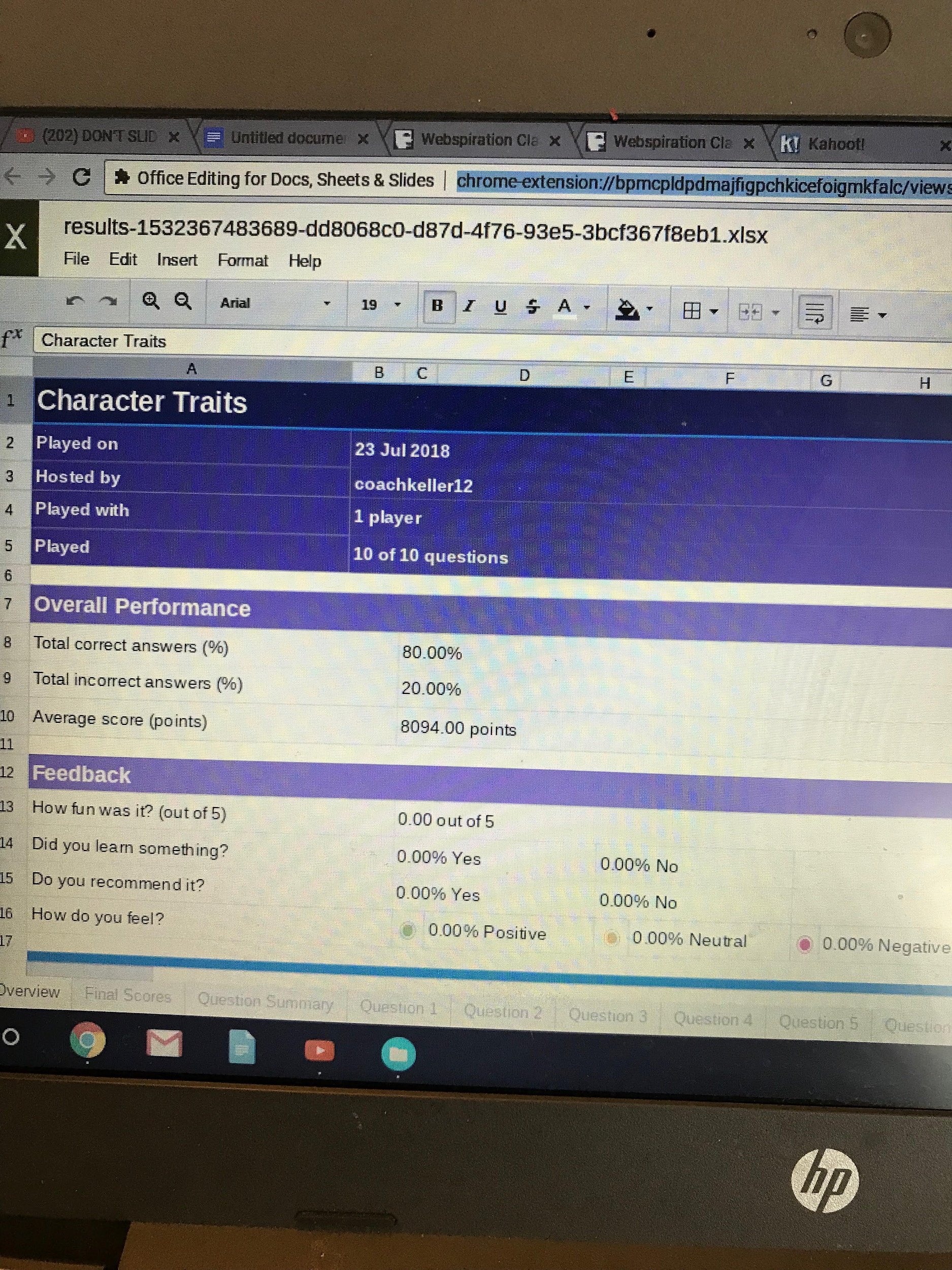Standards
- Ability to facilitate students' individual and collaborative use of technology, including classroom resources as well as distance and online learning opportunities when available and appropriate.
- Ability to design, implement, and assess learner-centered lessons and units that incorporate technology and use appropriate and effective practices in teaching and learning with technology.
- Ability to use technology tools for instruction, student assessment, management, reporting purposes and communication with parents/guardians of students including, but not limited to, spreadsheets, web page development, digital video, the Internet, and email.
- Ability to facilitate students' individual and collaborative use of technologies (including but not limited to spreadsheets, web page development, digital video, the Internet, and email) to locate, collect, create, produce, communicate, and present information.
- Ability to design, manage, and facilitate learning experiences incorporating technologies that are responsive to the diverse needs of learners, learning styles and the special needs of all students (e.g., assistive technologies for students with special needs).
- Ability to evaluate students' technology proficiency and students' technology-based products within curricular areas.
- Ability to design, develop, use, manage, and assess authentic digital-age learning experiences that are aligned with subject-area content and the Alabama Course of Study: Technology Education to maximize content learning and address diverse learning styles, incorporating the use of formative and summative measurement tools to better inform learning.
THE 5E LESSON Plan: .docx)
 https://docs.google.com/document/d/1Uxv1SLhlKpu8acJaExUzaK4IfXRzDigHmZa9ClqtfNE/edit?usp=sharing
https://docs.google.com/document/d/1Uxv1SLhlKpu8acJaExUzaK4IfXRzDigHmZa9ClqtfNE/edit?usp=sharing
Subject Area/Grade level:
English Language Arts Grade 10
Standard:
Reading: Key Idea and Details
3 ) Analyze how complex characters (e.g., those with multiple or conflicting motivations) develop over the course of a text, interact with other characters, and advance the plot or develop the theme. [RL.9-10.3]
ISTE Standard: Innovative Designer
Students know and use a deliberate design process for generating ideas, testing theories, creating innovative artifacts or solving authentic problems.
ISTE Standard: Knowledge Constructor
3c Students curate information from digital resources using a variety of tools and methods to create collections of artifacts that demonstrate meaningful connections or conclusions.
Objectives:
Students will analyze main character(s)
Students will collaborate to create a sequence organizer of main characters events
Students will engage in class discussions to analyze main character
Students will create a Storyboard with an emphasis on main characters.
Students will share Storyboards with class.
Differentiation Strategies:
This lesson will address the needs of various learning styles by using different formats to reach learners. Visual, auditory and creative needs will be reached by different parts of the lesson. The teacher will also follow all IEP/504 accommodations which exist throughout the classroom. The teacher will also allow more time for struggling students. When needed students can also complete some projects verbally or draw captions and pictures when necessary. Students who wish to go deeper into the lesson can work to incorporate animation into various projects.
Technology Survey:

Group Assignment:
I used Kahoot! as a formative assessment on character traits.
https://create.kahoot.it/details/character-traits/dd8068c0-d87d-4f76-93e5-3bcf367f8eb1

Individual Assignment:
Following the Kahoot! students created a graphic organizer using http://www.webspirationclassroom.com/launch.php

Final Assessment:
Students will be instructed to use the website http://www.storyboardthat.com/. After logging in to the website students will work together and choose a template to create a storyboard for a character from a previously discussed text. Students must collaborate to come up with nine descriptive words and sentences to describe their character. Students must also include the plot with their descriptive sentences. The storyboard must also include illustrations, title, name and character picked to analyze. Students will use the “Scene” tab to drag-and-drop a background for each storyboard box. Students will have many options to choose from by picking a topic that best suits their character. After selecting a background scene students will also add the characters needed to bring their storyboard to life. Characters can be found under the characters tab. After clicking the characters tab students will see an assortment of categories available to help bring their story to life. Students can also use other tabs such as, textables, shapes, worksheets and uploads. Each of these tabs gives options for objects which students can drag-and-drop into certain frames. Students can also click on text boxes to add the text needed to analyze their character. After working on their storyboard for approximately fifteen minutes, students will be instructed to save their document. Students will name and save their document and continue working until the storyboard is complete. Students can edit needed pictures and text and preview their storyboard when completed.

FInal Assessment Rubric: http://rubistar.4teachers.org/index.php?&screen=ShowRubric&rubric_id=2757730&
Teacher Reflection:
1. The students responded well to using technology in the classroom. They especally enjoyed playing Kahoot! as a review method, and creating the storyboard was an excellent assessment tool that was both informative and creative.
2. The most difficult assignment to create a rubric for was the storyboard assessment. I feel like the rubric made the expectations pretty clear, but there was still some issues with what was expected.
3. The instant feedback of the Kahoot! was great. Students new instantly where they were and where they were strong.
4. The storyboard assessment took some and patience to get through, but I believe the students were proud of their efforts after they finished.
5. I had one student who is not allowed to ujse technology at school and instead drew out his storyboard on paper. He seemed to enjoy the assignment as much or more than my other students, and his rubric was the same.
6. Most of my students are proficient when it comes to technology. The biggest issue was with the storyboard and some of the technicalities with the website, but they collaborated well and solved their problems together.
7. The rubric design tools were a life saver in that they allowed me to line up standards and still get across the material I wanted and needed to teach.